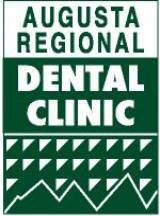Serving the SAW area since 1993
In the winter of 1993, community leaders and healthcare professionals from Staunton, Waynesboro and Augusta County adopted the motto, “helping those who are trying to help themselves,” as they began to lay plans for a volunteer clinic that would offer dignified care to working people without health insurance.
Percy Willson, Founder of the Augusta Regional Clinic
2001 The ARC moves to its new building in Fishersville, VA.
2020 - The ARDC now focuses on dental care while staying aware of unmet medical needs in the community
An inspiration for the clinic was the vision of the late Percy Willson, who was a beloved pharmacist in downtown Staunton. When Percy died of cancer before his dream of a free clinic could become a reality, his family and friends raised $22,500 in his memory through Trinity Episcopal Church, to be given as “seed money” for the Augusta Regional Clinic. The on-site pharmacy at the clinic is named in honor of him.
The Augusta Hospital Corporation (now Augusta Health Care) also provided a startup gift of $25,000. The mission of the clinic meshed well with the hospital’s commitment to provide indigent care and to hold down health care costs for its paying patients. In addition to funds, AHC offered, and continues to provide, resources of staff, materials, and services.
After many months of planning, the Augusta Regional Clinic opened for the first time on September 9, 1993. It operated from space it shared with the nursing program at Valley Vocational-Technical Center in Fishersville for its first 8 years. This donated space provided central access within the county for both patients and volunteers. Use of the donated space allowed the clinic to apply its financial resources to the direct care of its patients and to build a sound financial base for the future.
As the clinic grew to approximately 450 volunteers and provided over 3,500 patient encounters annually, its ability to function and grow at Valley Vo-Tech was severely affected by the confines of the space and its limited availability. The use of the nursing classroom as a “doctor’s office” and pharmacy was inefficient and impractical, as well as disruptive to the classes there.
In considering the need for another facility, the board agreed that a new site must contain at least 5,000 square feet of space and be located in the Fishersville area. This central location would offer:
Ease of access for patients and volunteers
Proximity to the hospital and area transportation
Preservation of the “joint ownership” of clinic donors and volunteers throughout the service area
When a generous donor offered the gift of land on Mule Academy Road as a site for the clinic, the board, after careful consideration, accepted the land and developed preliminary plans for a building that would accommodate current needs as well as future growth. To paraphrase a comment from a volunteer physician: “We want the quality of the facility to equal the quality of the care given at the clinic.”
Ground was broken in the spring of 2000, and the Board embarked on a Capital Campaign to raise the $1 million needed for the construction of the building - $700,000 for construction costs and furnishings plus $300,000 for a Building Fund to endow future building expenses. The new facility was completed in the spring of 2001, and the clinic moved from Valley Vo-Tech to its new quarters.
After 27 years of serving approximately 10,000 individual adult patients in the Staunton, Augusta and Waynesboro area, the Augusta Regional Clinic (ARC) is no longer experiencing the need for its primary care services, and has decided to close the Medical Clinic on July 1, 2020.
The ARC (now ARDC) will now concentrate its resources and efforts on the crucial need for dental care by growing its Dental Clinic. In making the decision to close the Medical Clinic, ARC’s Board of Directors emphasized its commitment to providing health care services to those residents of our community who cannot otherwise afford access to care and to assisting if unmet medical needs are identified in the future.



